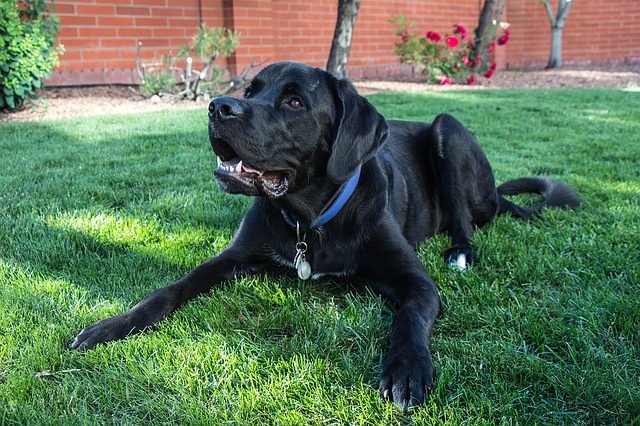Dogs are extremely vocal animals. They use a series of barks, growls, howls, whines and yips to communicate with one another and their human caretakers.
While some dogs are much more vocal than others, they never bark without a reason – even if that reason isn’t always clear to us!

There are six major causes for communicative barking in dogs. Find out what your pooch is trying to tell you!
NOTE: In rare cases, barking can be a symptom of a medical problem – like dementia or a brain tumor. If the behavior is new and unexpected or you feel that it is out of control, consult your veterinarian for help.
1. “I’m feeling territorial/protective.”

Most dogs demonstrate this type of barking when a person or animal approaches what they consider to be their territory – usually their home and/or yard. Depending on the dog, this type of barking can come across quite frantic or even aggressive.
Territorial barkers should be kept indoors with limited access to windows and doors. Although preventing dogs from barking altogether is an unrealistic goal, you can train them to quiet down on command. Trainers usually recommend allowing your dog to “notify” you with a bark or two before giving the hand signal or voice cue to stop.
2. “I’m scared or startled.”

Some dogs bark when a stimulus startles or frightens them – like a sudden shout from outside on the street. A startled/fearful bark tends to be sharper and more shrill than a playful or excited bark.
Never punish a fearful dog. If this type of barking gets excessive, train your dog with a voice cue or hand signal.
3. “I’m lonely or bored.”

Dogs are social animals that depend on the company of their pack members in order to feel safe and secure. If left alone for long periods of time, they will often express their loneliness with low mournful barks or yip frantically out of boredom.
These dogs need more entertainment and/or companionship in order to alleviate their stress. Some dogs enjoy treat-dispensing puzzle toys, while others do better with visits from a pet sitter or boarding at a doggy day care during your absence.
4. “Hi! It’s wonderful to see you! Let’s play!”

A playful bark is easy to recognize because it tends to be accompanied by a happily wagging tail and a relaxed, “smiling” face. Dogs that are greeting a loved one or a potential playmate may “bow” with their front legs splayed and their rump in the air in a downward-facing-dog pose.
Excited barking that accompanies a greeting or a play session usually dies down on its own once the dog settles down a bit. If other unwanted behaviors accompany the barking during greetings – like jumping up or mouthing guests – train your dog to stop at a spot several feet away from the door and wait there until you release him.
5. “I want attention/ a treat/ a walk/ your sandwich.”

Solicitous barking should be nipped in the bud as soon as possible. Dogs that bark when they want something – like a treat, a walk, or your lunch – have learned to be demanding in order to get their way. Take care not to reward this behavior by giving in to your pup’s bossiness. Wait until the barking stops so your dog won’t see it as an effective way to get what he wants.
6. “Help! I have separation anxiety.”

True separation anxiety is a behavioral disorder that requires veterinary attention and possibly the assistance of a behaviorist. Compulsive barking is just one of the many symptoms that can accompany this problem. Anxious dogs also tend to pace, house soil, destroy property, or dig at windows and doors.
While counter-conditioning may help alleviate separation anxiety, some dogs require drug therapy to in order to experience relief.
H/T to Web MD
Featured Image via Flickr | Lianne Viau
 Toledo, United States.
Toledo, United States.